How Often Do You Take Your Cat to The Vet?
The Importance of Regular Vet Visits for Your Cat's Health
Taking your cat to the vet regularly is an important part of responsible pet ownership. Routine vet visits can help to keep your cat healthy and prevent potential health problems from developing. In this article, we will discuss how often you should take your cat to the vet, what to expect during a vet visit, and why it’s important to prioritize your cat’s health.
Why Preventative Care is Important for Cats
Preventative care is essential for the health and well-being of your feline friend. Regular check-ups with a veterinarian can detect any potential health issues early on, allowing for prompt treatment and better outcomes.
Regular Check-Ups
Scheduling regular check-ups with a veterinarian is an important part of preventative care. During these visits, your cat will receive a thorough examination, and the vet will check for any signs of illness or disease. Catching health problems early on can help prevent more serious health issues down the line.
Vaccinations
Keeping your cat up to date on vaccinations is crucial in preventing diseases such as feline leukemia, rabies, and others. The following are some common vaccinations for cats:
- Rabies: a deadly virus that can be transmitted to humans and other animals through a bite from an infected animal
- Feline panleukopenia: a highly contagious virus that can cause severe illness or death
- Feline viral rhinotracheitis: a virus that can cause upper respiratory infections in cats
- Feline calicivirus: another virus that can cause upper respiratory infections in cats
- Feline leukemia: a virus that weakens the immune system and can lead to various health problems
Your veterinarian can recommend which vaccinations are necessary for your cat based on their lifestyle, age, and overall health.
Nutrition, Exercise, and Dental Care
Proper nutrition, exercise, and dental care are also important components of preventative care. Providing your cat with a balanced diet, adequate exercise, and regular dental cleanings can help prevent obesity, diabetes, and dental problems.
Indoor Safety
Keeping your cat indoors and protecting them from common household hazards can reduce their risk of injury and illness. Make sure to keep toxic substances out of reach, secure windows, and balconies, and provide a safe and comfortable living environment for your cat.
Preventative care is the key to keeping your cat healthy. Providing your cat with a balanced diet, plenty of water, and exercise can go a long way in preventing health issues. Regular grooming, including nail trims and teeth cleaning, can also help keep your cat healthy. Keeping up with vaccinations, flea, and tick prevention, and heartworm medication can prevent serious health issues from developing.
Catching Health Issues Early for Cats
As cat owners, we always want the best for our furry companions. Just like humans, cats can fall ill, and sometimes it can be challenging to identify when they are not feeling their best. However, with proper attention and care, it’s possible to catch health issues early for cats. In this article, we will discuss the importance of early detection, the signs to look for, and how to keep your feline friend healthy.
Importance of early detection
Early detection of health issues can save your cat’s life. Regular vet checkups and observing your cat’s behavior can help identify health problems before they become too severe. Catching a health issue early on gives your cat the best chance of recovery, and it may prevent the problem from worsening.
Signs to Look For
- Change in appetite – eating more or less than usual
- Lethargy or lack of energy
- Change in drinking habits – drinking more or less than usual
- Weight loss or gain
- Difficulty breathing or coughing
- Excessive grooming or loss of fur
- Vomiting or diarrhea
- Discharge from the eyes or nose
- Swelling or lumps on the body
- Changes in behavior or mood – aggression, hiding, or excessive meowing
- Difficulty urinating or defecating
- Bad breath or dental issues
- Excessive thirst or dehydration
- Limping or difficulty walking
- Seizures or tremors
- Loss of balance or coordination
- Skin irritations or itching
- Blood in urine or stool
- Excessive vocalization or meowing
- Changes in litter box habits – using the litter box less frequently or avoiding it altogether
Remember, cats are skilled at hiding pain and discomfort, so it’s essential to pay attention to their behavior and habits. If you notice any of these signs in your cat, don’t hesitate to take them to the vet for an evaluation. Early detection and treatment can make a significant difference in your cat’s overall health and well-being.
Below, these resources are useful for cat owners because they provide reliable information and resources on cat health, behavior, and care. By accessing these websites, cat owners can learn about the signs of health issues in cats, as well as how to prevent and treat them. The directories of feline veterinarians and animal hospitals can help cat owners find qualified professionals in their area who can provide care for their cats. Additionally, these resources can help cat owners understand the unique needs and behaviors of cats, and how to provide them with a safe and enriching environment.
American Association of Feline Practitioners: The American Association of Feline Practitioners (AAFP) is a professional organization dedicated to promoting the health and welfare of cats. Their website provides information on cat health, behavior, and care, as well as a directory of feline veterinarians.
Cornell Feline Health Center: The Cornell Feline Health Center is a veterinary medical center that specializes in the health and wellness of cats. Their website offers information on cat health and disease, as well as resources on nutrition, behavior, and environmental enrichment.
The Cat Community: The Cat Community is a resource for cat owners and enthusiasts. Their website provides information on cat health and wellness, as well as resources on behavior and nutrition.
International Cat Care: International Cat Care is a charity dedicated to improving the welfare of cats worldwide. Their website offers information on cat care, health, behavior, and welfare.
The Cat Fanciers’ Association: The Cat Fanciers’ Association (CFA) is a registry of pedigreed cats and a club for cat enthusiasts. Their website offers information on cat breeds, health, care, and behavior.
VCA Animal Hospitals: VCA Animal Hospitals is a network of veterinary hospitals across the United States. Their website provides information on cat health, as well as a directory of veterinarians.
PetMD: PetMD is an online resource for pet owners that provides articles on cat health, behavior, nutrition, and care, as well as a symptom checker and a directory of veterinarians.
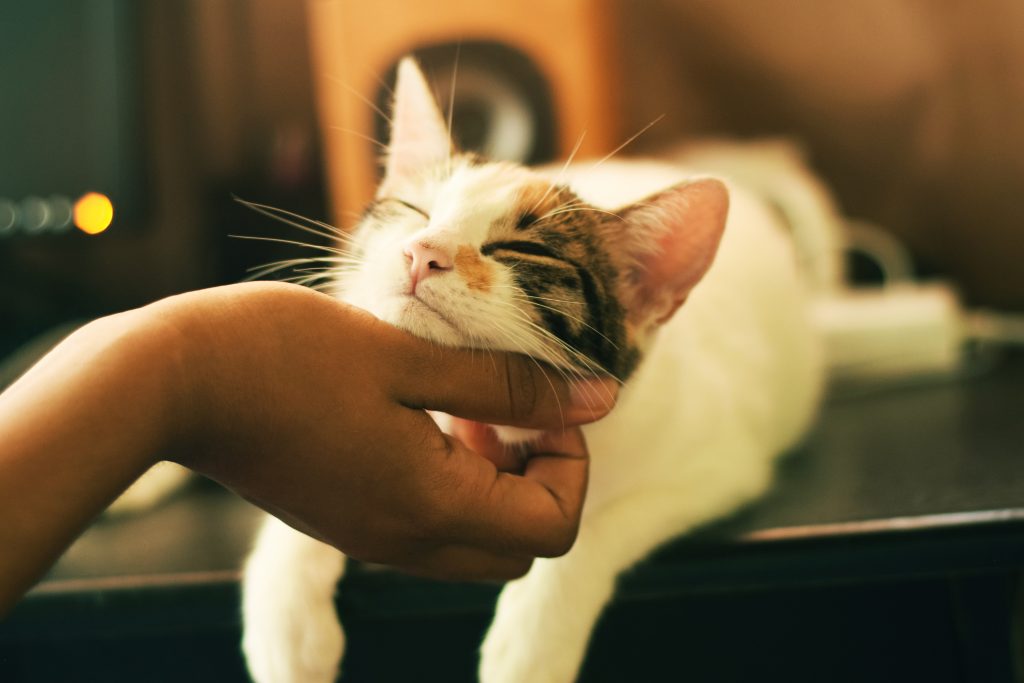

Preventative Care
Preventative care is the key to keeping your cat healthy. Providing your cat with a balanced diet, plenty of water, and exercise can go a long way in preventing health issues. Regular grooming, including nail trims and teeth cleaning, can also help keep your cat healthy. Keeping up with vaccinations, flea, and tick prevention, and heart-worm medication can prevent serious health issues from developing.
Keep your cat healthy with a catio
In addition to these preventative measures, providing your cat with access to a catio can also be beneficial for their overall health. A catio is an enclosed outdoor space that allows your cat to enjoy fresh air and sunshine while staying safe from predators and other outdoor hazards. A catio can also help prevent your cat from escaping or getting into fights with other animals, which can lead to injuries or illnesses.
Having access to a catio can also provide mental and physical stimulation for your cat. Cats are natural climbers and love to explore their environment. A catio can provide opportunities for climbing, jumping, and playing, which can help keep your cat active and engaged.
By incorporating a catio into your cat’s preventative care routine can provide numerous benefits for their overall health and well-being. It can prevent injuries and illnesses, provide mental and physical stimulation, and give your cat a safe and enjoyable outdoor space.
Get your catio built by Cat Topia
At Cat Topia, we understand the importance of preventative care for cats. That’s why we offer customized catio design and construction services to help keep your feline friend healthy and happy. Our team of experts will work with you to create a catio that meets your cat’s unique needs and fits seamlessly into your home and outdoor space.
Our catios are designed with your cat’s safety and comfort in mind. We use high-quality materials and secure construction methods to ensure your cat stays safe and protected from predators and other outdoor hazards. Our catios are also designed to provide mental and physical stimulation, with features like scratching posts, perches, and climbing structures.
In addition to our catio design and construction services, we also offer catio accessories and maintenance services. We can install cat doors, provide cat enclosure landscaping services, and offer cleaning and maintenance to keep your catio in top condition.
At Cat Topia, we believe that every cat deserves access to a safe and enjoyable outdoor space. Our catios provide a way for your cat to enjoy fresh air and sunshine while staying protected from harm. With our customized catio design and construction services, you can provide your cat with the preventative care they need to stay healthy and happy for years to come.

Building a Relationship with your Vet
As a cat owner, you are responsible for the health and well-being of your furry friend. One of the most important things you can do to ensure your cat’s health is to build a strong relationship with your vet. We will explain why it’s important to have a good relationship with your vet, how to find the right vet for your cat, and tips for building a strong relationship with your vet.
Importance of Regular Veterinary Visits
Regular veterinary visits are important for your cat’s overall health. Cats are notorious for hiding illness, so it’s important to take them to the vet for regular checkups. During these checkups, your vet will be able to detect any health problems early on, when they are easier to treat. Your vet can also provide you with advice on how to keep your cat healthy, such as feeding recommendations and exercise routines.
Finding the Right Vet for Your Cat
Finding the right vet for your cat can be a daunting task. You want someone who is knowledgeable, compassionate, and who your cat is comfortable with. Some tips for finding the right vet include:
- Visit the vet's office before making an appointment to see if it's a good fit for you and your cat
- Read online reviews
- Look for a vet who specializes in cats
- Ask for recommendations from other cat owners
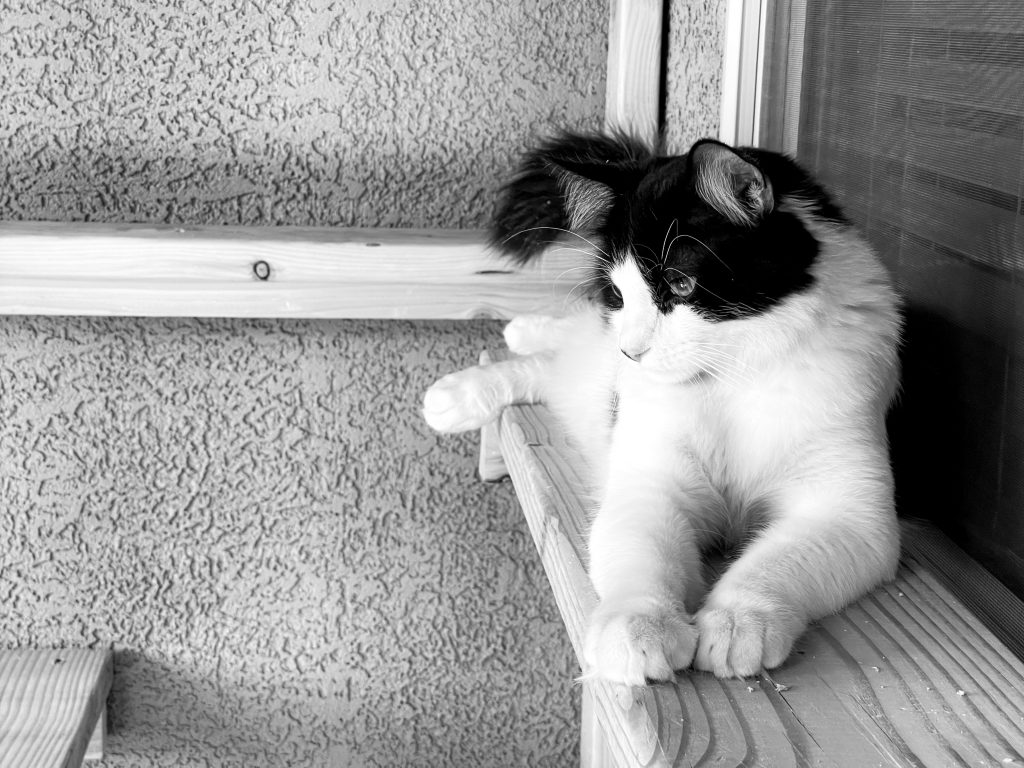
Tips for Building a Strong Relationship with Your Vet
Building a strong relationship with your vet is important for your cat’s health. Here are some tips for building a strong relationship with your vet:
- Be honest: It’s important to be honest with your vet about your cat’s health and behavior. This will help your vet make an accurate diagnosis and provide the best treatment.
- Ask questions: If you don’t understand something your vet is telling you, don’t be afraid to ask questions. Your vet is there to help you and your cat.
- Follow your vet’s advice: Your vet may recommend certain treatments or lifestyle changes for your cat. It’s important to follow their advice to keep your cat healthy.
- Be respectful: Your vet is a professional and deserves to be treated with respect. Being polite and respectful can help build a strong relationship with your vet.
By building a strong relationship with your vet is important for your cat’s health. Regular veterinary visits, finding the right vet, and following these tips can help you build a strong relationship with your vet and ensure your cat stays healthy and happy.
Factors Affecting How Often Your Cat Needs Vet Visits
As a responsible cat owner, ensuring your feline companion’s health and wellbeing is a top priority. Regular veterinary check-ups are an essential aspect of maintaining your cat’s health, but the frequency of these visits can vary depending on various factors. Understanding the factors that affect how often your cat needs to visit the vet can help you make informed decisions and provide your pet with the best possible care.
Age and Life Stage
Cats are one of the most popular pets in the world, and it’s not hard to see why. They are independent, affectionate, and have a unique personality. Just like humans, cats go through different stages in their lives, and their needs change accordingly. Understanding your cat’s age and life stage is important to ensure they receive proper care and live a healthy and happy life.
Kittenhood
Kittens are adorable and playful, but they require a lot of attention and care. During their first few weeks of life, they rely on their mother’s milk for nutrition and warmth. Once they reach four weeks of age, they can start eating solid food. At this stage, it’s important to provide them with a balanced diet rich in protein and fat to support their growth and development.
Kittens are also very curious and love to explore their surroundings. They need a safe and stimulating environment to keep them entertained and help them develop their cognitive and physical abilities. Kittens require regular veterinary check-ups to ensure they are healthy and free of parasites.
Adulthood
Adulthood is the longest stage of a cat’s life, starting from 6 months of age and lasting until around 10-12 years old. During this stage, cats are more independent and less active than kittens. They require less frequent feedings and grooming, but still need regular check-ups with a veterinarian to ensure their overall health and well-being. Adult cats also need to be spayed or neutered to prevent unwanted litters and reduce the risk of certain health problems.
Senior Years
Senior years start around 10-12 years old and can last for several years. During this stage, cats may start to experience age-related health problems such as arthritis, kidney disease, and dental issues. They may also become less active, sleep more, and lose weight. Senior cats require more attention and care from their owners, including regular check-ups with a veterinarian, a balanced diet, and a comfortable and safe living environment.



Factors Affecting Vet Visits
The frequency of vet visits for cats can vary depending on their age and life stage, as well as other factors such as their overall health and lifestyle. Kittens require more frequent visits for vaccinations, deworming, and spaying or neutering. Adult cats should have an annual wellness exam, while senior cats may need to visit the vet more often, possibly every six months. Cats that live indoors may require fewer vet visits than those that spend time outdoors, as they are less exposed to potential health risks. Overall, regular vet visits are essential for maintaining your cat’s health and detecting any health issues early on, which can improve the chances of successful treatment and a longer, happier life.
Breed and Genetics
Understanding breed and genetics is an essential aspect of responsible pet ownership, as it can help you anticipate potential health issues and provide appropriate care. In this article, we will explore the relationship between breed and genetics for cats and how it affects the frequency of vet visits.
Breed and Genetics in Cats
Breed refers to a group of animals that share similar physical and behavioral characteristics. In cats, breed is determined by a set of inherited traits that are passed down from parents to offspring. These traits include coat color and pattern, eye color, body size and shape, and personality traits. Genetics, on the other hand, is the study of how traits are passed down from generation to generation through DNA.
How Does Breed and Genetics Affect How Often You Take Your Cat Into The Vet
The genetic makeup of a cat can have a significant impact on their overall health. Certain breeds of cats are prone to specific health conditions that are passed down from their ancestors. For example, Siamese cats are predisposed to respiratory problems, while Persian cats are more susceptible to kidney disease.
Genetic testing can help identify potential health risks associated with a cat’s breed. This information can help veterinarians provide more targeted care and monitor a cat’s health more closely. It is important to note that not all genetic conditions can be detected through testing, and a cat’s health can be influenced by other factors, such as diet and lifestyle.
The genetic makeup of a cat can also impact how often they need to visit the vet. Breeds that are prone to certain health conditions may require more frequent check-ups and preventative care. For example, a Siamese cat may need more frequent respiratory check-ups and a special diet to manage their risk for respiratory problems.
Additionally, certain genetic conditions may not show symptoms until later in a cat’s life. Regular vet visits can help detect these conditions early before they become more serious or difficult to treat. As a result, cats with a genetic predisposition to certain health issues may require more frequent vet visits to maintain their health and quality of life.
By understanding breed and genetics is an essential aspect of responsible cat ownership. A cat’s breed and genetic makeup can influence their overall health and the frequency of vet visits they require. By being aware of your cat’s breed and genetic predispositions, you can provide the appropriate care to ensure they live a happy and healthy life. Regular vet visits are also crucial for monitoring a cat’s health and detecting potential issues early on.
Lifestyle and Environment
We all want our furry friends to live long and healthy lives. However, ensuring your cat’s well-being involves more than just providing them with food, water, and a cozy bed to sleep in. Factors such as their lifestyle and environment also play a crucial role in their health and can impact how often they need to visit the vet.
The Role of a Catio in Promoting a Healthy Lifestyle for Cats
A catio is an enclosed outdoor space designed specifically for cats. It allows cats to enjoy the benefits of being outside while keeping them safe from potential dangers such as cars, predators, and exposure to disease. A catio is an excellent addition to any cat’s lifestyle and can provide numerous health benefits, such as:
- Increased exercise: Cats are natural hunters and love to play. A catio provides a safe and stimulating environment for them to explore and engage in physical activity, which can help prevent obesity and related health issues.
- Mental stimulation: Cats are curious creatures and need mental stimulation to keep them happy and healthy. A catio provides a stimulating environment with new sights, sounds, and smells, which can prevent boredom and reduce stress.
- Protection from the elements: Cats are susceptible to heatstroke, hypothermia, and dehydration. A catio provides shade, shelter, and access to water, ensuring that your cat stays comfortable and healthy in all weather conditions.
- Reduced risk of disease: Cats that are allowed to roam outdoors are at a higher risk of contracting diseases from other cats, wildlife, and exposure to parasites. A catio provides a safe environment, reducing the risk of disease and infection.

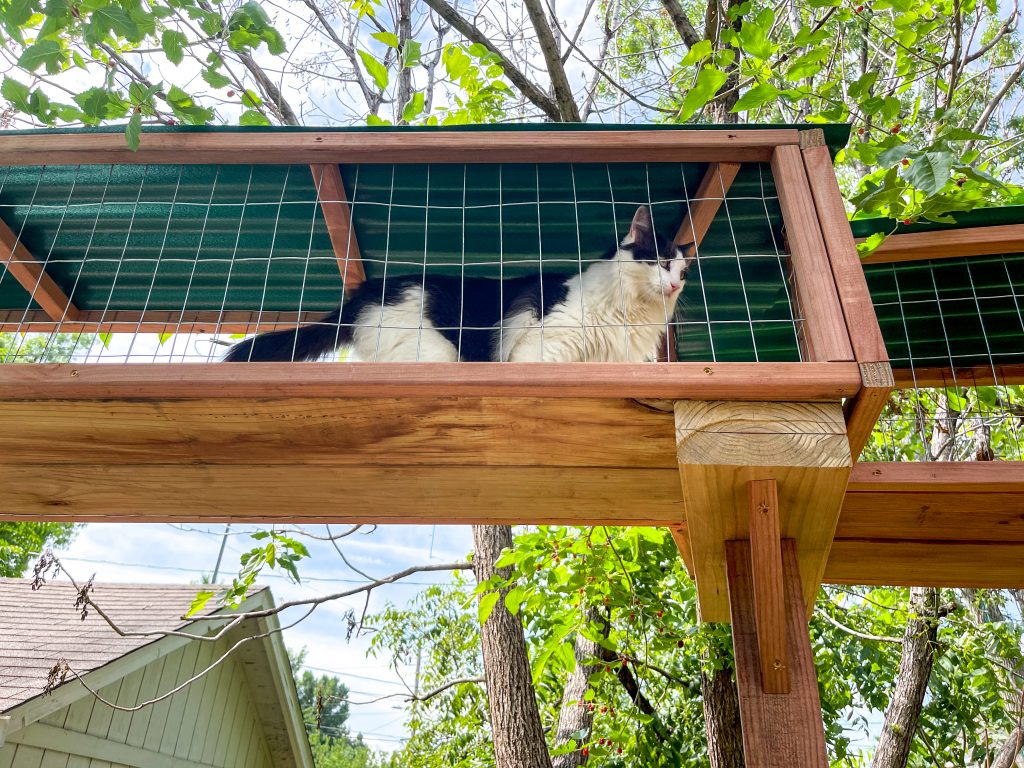
Pre-Existing Conditions
Cats are known for their independent nature and self-sufficient personalities, but they still require regular veterinary care to maintain their health and well-being. As with humans, pre-existing conditions in cats can affect their overall health and the frequency of their visits to the vet. In this article, we will discuss pre-existing conditions in cats and the factors that affect how often they need to visit the veterinarian.
What are pre-existing conditions in cats?
Pre-existing conditions are health issues that existed before the cat’s visit to the veterinarian. These conditions can be chronic or acute, and they may require long-term or short-term treatment. Common pre-existing conditions in cats include diabetes, kidney disease, respiratory problems, and allergies. These conditions can affect the cat’s overall health and require ongoing management to prevent further complications.
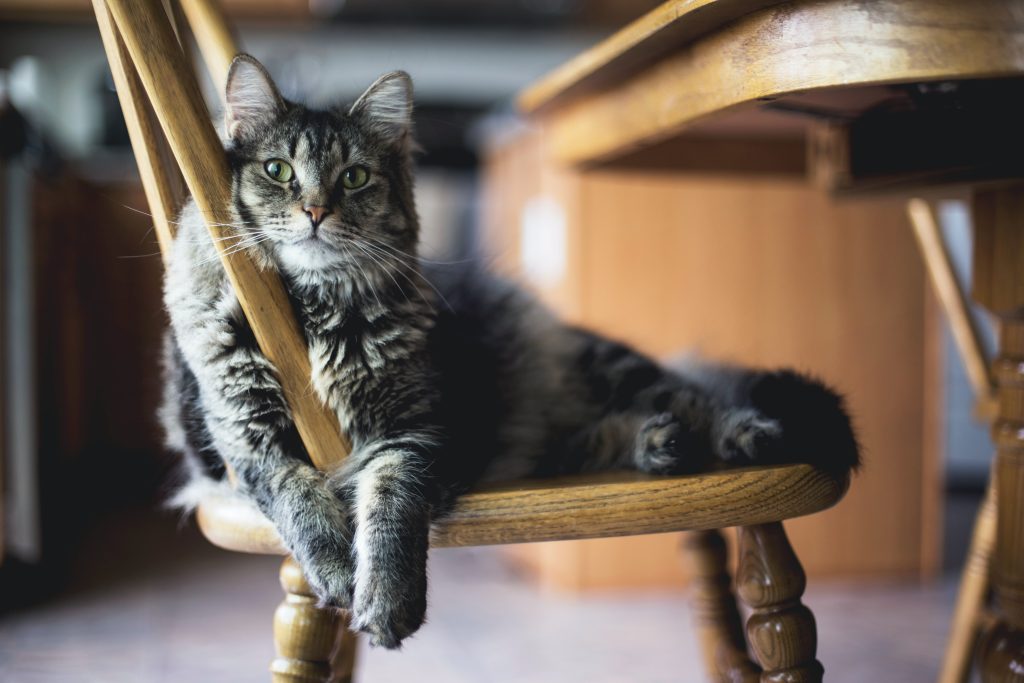
How do pre-existing conditions affect vet visits?
Pre-existing conditions in cats can significantly affect the frequency of their visits to the veterinarian. Cats with chronic conditions require regular check-ups and monitoring to ensure that their condition is managed appropriately. These visits may include blood tests, physical exams, and medication adjustments. The frequency of visits can vary depending on the severity of the condition, but they are typically more frequent than annual check-ups.
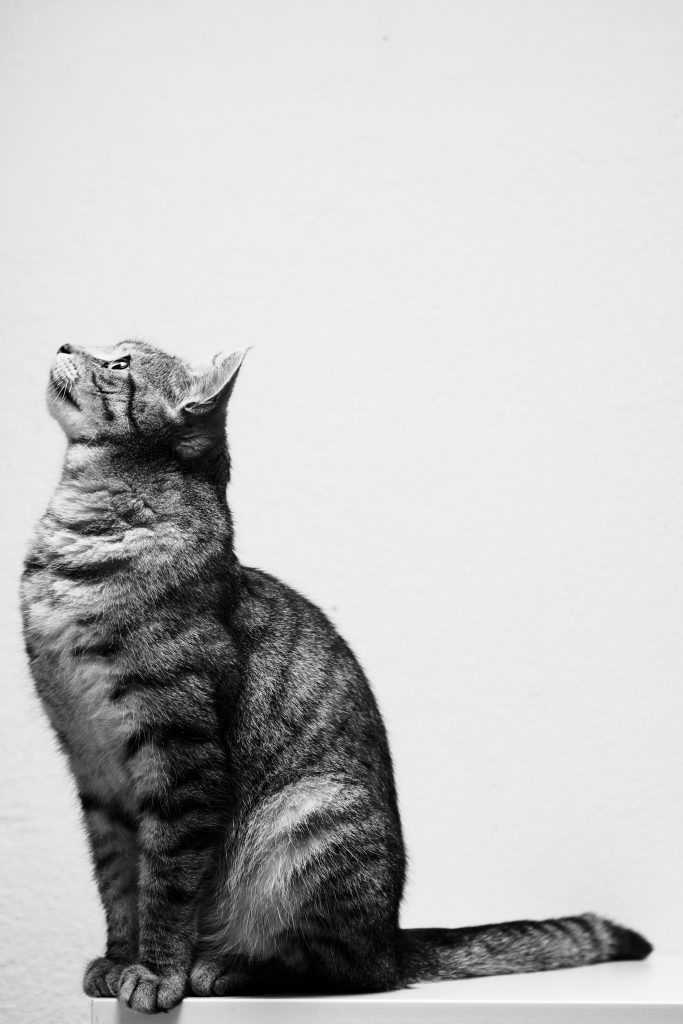
The importance of regular check-ups
Even if your cat does not have a pre-existing condition, regular check-ups are essential for their health and well-being. Annual check-ups can help detect potential health issues before they become more severe, leading to quicker and more effective treatment. These check-ups may include vaccinations, parasite prevention, and general wellness exams. Regular vet visits can also help prevent the development of pre-existing conditions, as early detection and treatment can help manage them more effectively.

Pre-existing conditions in cats can significantly impact the frequency of their visits to the veterinarian. Regular check-ups are crucial for maintaining their health and well-being, even if they do not have a pre-existing condition. Several factors can affect how often your cat needs to visit the vet, including age, breed, and lifestyle. With proper veterinary care and management, cats with pre-existing conditions can live long and healthy lives.
Signs that your cat needs to see a vet
As a cat owner, it’s important to be aware of the signs that your furry friend needs to see a veterinarian. Cats are notorious for hiding their illnesses, so it’s up to you to recognize the subtle changes in their behavior or health. While regular check-ups are essential, there are specific signs that indicate your cat needs urgent medical attention. From vomiting to changes in appetite, we’ll explore the top signs that your cat needs to see a vet.
Changes in Behavior, Appetite or Thirst
You are probably aware that feline behavior can be unpredictable. However, when your cat starts to display unusual behavior or appetite changes, it may be a sign that your furry friend needs veterinary attention. In this article, we will discuss the various changes in behavior or appetite that you may observe in your cat and the warning signs that signal the need for a trip to the vet.
Changes in Behavior
Cats are creatures of habit, and a change in their behavior can indicate that something is wrong. Some of the behavioral changes that may indicate that your cat needs to see a vet include:
- Lethargy: If your cat is sleeping more than usual or not showing any interest in activities that it usually enjoys, it may be a sign of lethargy. Lethargy can be a symptom of several health problems, including anemia, liver disease, or kidney disease.
- Aggression: If your normally friendly cat becomes aggressive or defensive, it may be a sign of pain or discomfort. Cats are experts at hiding their pain, so aggression may be their only way of communicating that something is wrong.
- Hiding: If your cat is hiding more than usual or avoiding interaction with family members, it may be a sign of a health problem. Cats may hide when they are in pain, stressed, or feel unwell.
Changes in Appetite
Cats are known for their finicky eating habits, but a sudden change in appetite can be a sign of a medical issue. Here are some appetite changes to watch out for:
- Loss of Appetite: If your cat is not eating as much as it used to, it may be a sign of a health problem. Loss of appetite can be a symptom of several conditions, including dental problems, gastrointestinal issues, or kidney disease.
- Increased Appetite: If your cat suddenly develops an insatiable appetite, it may be a sign of hyperthyroidism, diabetes, or other health problems. An increased appetite can also lead to rapid weight gain, which can cause other health issues.
Changes in Thirst
If your cat is drinking more water than usual, it may be a sign of an underlying health problem, such as diabetes or kidney disease. Conversely, if your cat is drinking less water than usual, it can lead to dehydration and other health problems.
It is essential to monitor your cat’s behavior and appetite carefully. Any changes, even small ones, can indicate a health issue that requires veterinary attention. By keeping an eye on your cat’s behavior and appetite, you can identify potential problems early and seek treatment promptly. Remember, your cat cannot tell you when something is wrong, so it’s up to you to watch for signs that your cat needs to see a vet.
Increased Thirst or Urination
As a cat owner, you may notice some changes in your cat’s behavior, such as increased thirst or urination. While these changes may seem minor, they could be signs of a more serious underlying health issue.
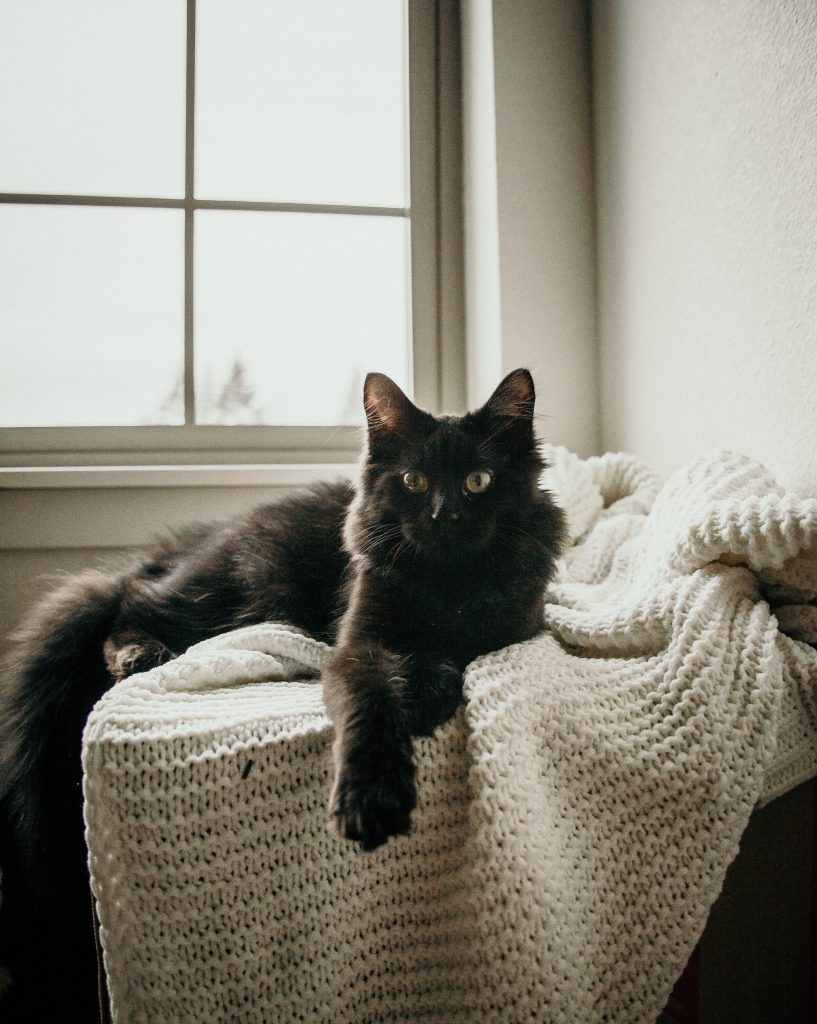
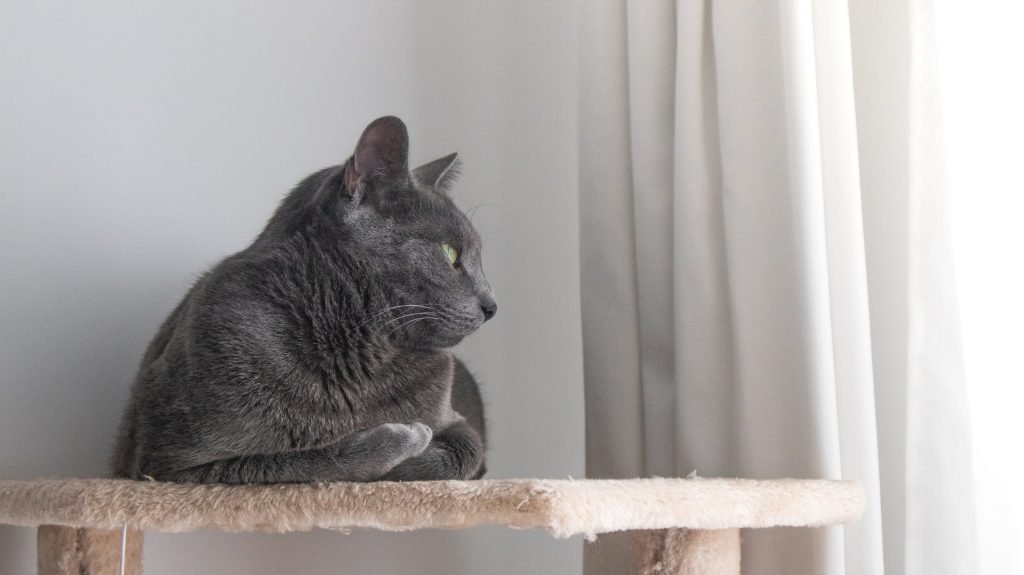

What Causes Increased Thirst or Urination in Cats?
There are several reasons why your cat may be drinking more water than usual or urinating more frequently. One common cause is kidney disease, which can lead to dehydration and increased thirst. Other potential causes include diabetes, hyperthyroidism, and urinary tract infections.
How Can You Tell If Your Cat Needs to See a Vet?
If you notice that your cat is drinking more water than usual or is urinating more frequently, it is important to monitor their behavior and look for other signs that they may need to see a vet. These signs may include lethargy, loss of appetite, vomiting, diarrhea, and weight loss.
Increased thirst or urination in cats can be a sign of a more serious underlying health issue. If you notice these symptoms in your cat, it is important to monitor their behavior and look for other signs that they may need to see a vet. Regular vet visits can help identify potential health problems early on and ensure that your cat is receiving the care they need to stay healthy.
Vomiting, Diarrhea, or Constipation
It’s important to keep an eye on your furry friend’s bathroom habits. Vomiting, diarrhea, and constipation are all common issues that cats can face, and they can be indicative of a larger health problem. We will discuss each of these issues and what signs to look out for to determine if your cat needs to see a vet.
Vomiting
Cats are known for their hairball issues, but vomiting can also be a sign of a more serious health problem. If your cat is vomiting frequently or has been vomiting for more than a day, it’s time to take them to the vet. Other signs to look out for include:
- Blood in vomit
- Lethargy
- Loss of appetite
- Weight loss
- Dehydration
Vomiting can be caused by a variety of issues, including gastrointestinal problems, kidney disease, or even cancer. It’s important to have your cat evaluated by a veterinarian to determine the underlying cause.
Diarrhea
Diarrhea is another common issue that cats can face. It can be caused by a change in diet, a bacterial infection, or even stress. If your cat has diarrhea that lasts for more than a day or is accompanied by other symptoms, it’s time to take them to the vet. Other signs to look out for include:
- Blood in stool
- Lethargy
- Loss of appetite
- Dehydration
Diarrhea can lead to dehydration, which can be dangerous for cats. It’s important to have your cat evaluated by a veterinarian to determine the underlying cause and prevent further health issues.
Constipation
Constipation is less common in cats than vomiting or diarrhea, but it can still be a cause for concern. If your cat is straining to go to the bathroom or hasn’t had a bowel movement in more than two days, it’s time to take them to the vet. Other signs to look out for include:
- Lethargy
- Loss of appetite
- Vomiting
- Painful abdomen
Constipation can be caused by a variety of issues, including hairballs, dehydration, or even an obstruction in the digestive tract. It’s important to have your cat evaluated by a veterinarian to determine the underlying cause and prevent further health issues.
Vomiting, diarrhea, and constipation are all common issues that cats can face. If your cat is experiencing any of these symptoms, it’s important to have them evaluated by a veterinarian to determine the underlying cause and prevent further health issues. Additionally, regular check-ups with a veterinarian can help ensure your cat stays healthy and happy.
Difficulty Breathing or Coughing in Cats
Cats are typically known for their grace and agility, but they are also vulnerable to a range of health issues. One of the most common symptoms that cat owners should be aware of is difficulty breathing or coughing. While coughing and difficulty breathing can be caused by a variety of factors, some of which may not be serious, it is important to take note of these symptoms and determine when it is necessary to take your cat to the vet.
Difficulty breathing or coughing in cats can be a sign of a serious health issue. Some common signs that your cat may need to see a vet include:
Persistent coughing: If your cat is coughing persistently, this could be a sign of respiratory infection, asthma, or heart disease.
Wheezing: Wheezing is a high-pitched, whistling sound that your cat may make when breathing. This could be a sign of asthma, pneumonia, or heart disease.
Labored breathing: If your cat is breathing heavily or struggling to catch its breath, this could be a sign of a serious respiratory or cardiac issue.
Blue lips or gums: Blue or purple discoloration of the lips or gums is a sign of oxygen deprivation and requires immediate veterinary attention.
Lethargy and lack of appetite: These symptoms, along with difficulty breathing or coughing, could be a sign of a serious respiratory infection or other health issue.
Causes of Difficulty Breathing or Coughing in Cats
There are a variety of factors that can cause difficulty breathing or coughing in cats. Some of the most common causes include:
Respiratory infections: Cats can contract upper respiratory infections that can cause coughing and difficulty breathing.
Asthma: Cats can also suffer from asthma, which is characterized by chronic inflammation of the airways.
Heart disease: Heart disease can cause fluid to build up in the lungs, leading to coughing and difficulty breathing.
Allergies: Cats can have allergies to a variety of environmental factors, including dust, pollen, and mold, which can cause coughing and difficulty breathing.
Foreign objects: If a cat ingests a foreign object, it can become lodged in the airway, causing coughing and difficulty breathing.
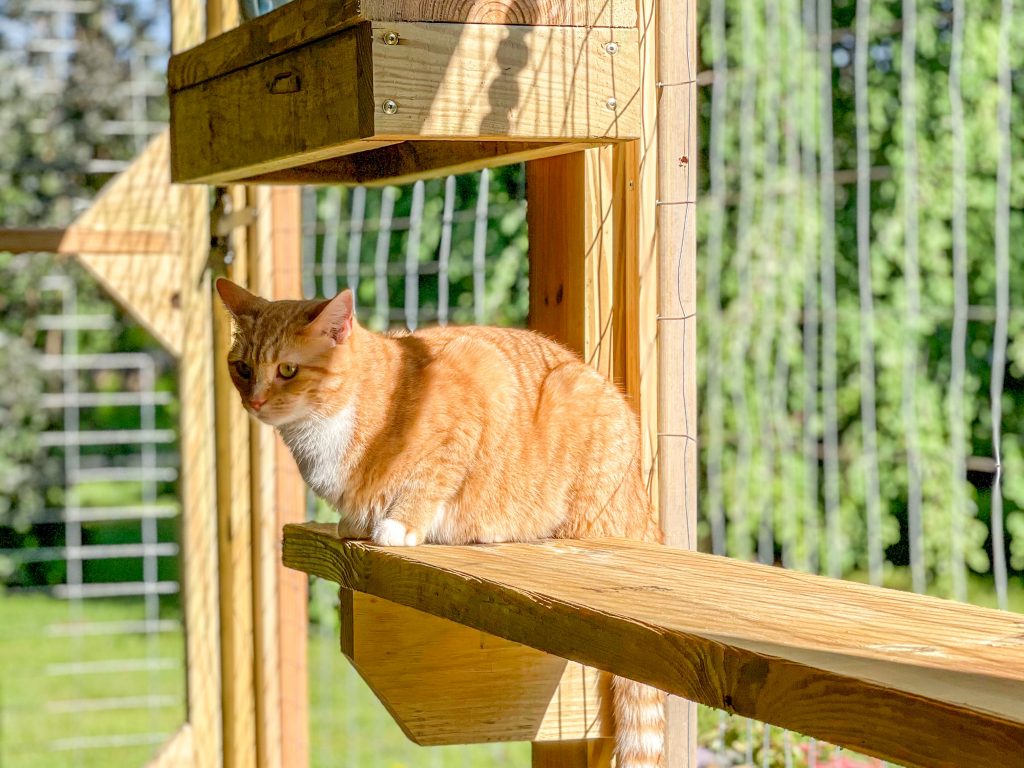

Conclusion
Taking your cat to the vet regularly is an essential part of being a responsible pet owner. By following the general guidelines for vet visits and tailoring your cat’s visit schedule to their individual needs, you can help to ensure that they stay healthy and happy. During a typical vet visit, you can expect your cat to undergo a physical exam and may receive preventative measures to keep them healthy. Prioritizing your cat’s health can help to prevent health issues, extend their lifespan, and deepen your bond with them.